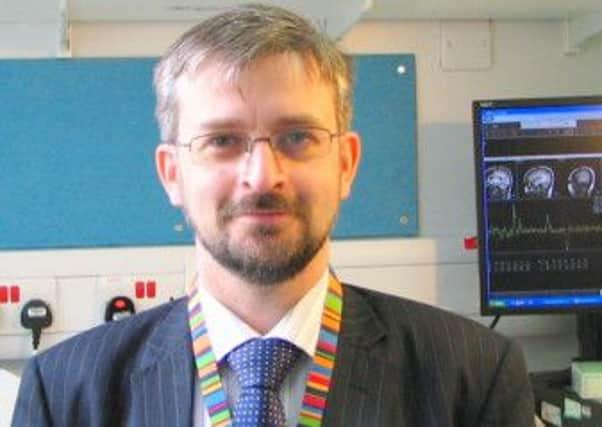Mother’s praise for hi-tech spinal surgeons


Suzanne Wingell could have suffered paralysis following the highly-complex operation performed by experts at Sheffield’s Royal Hallamshire Hospital.
But using a novel device, they painstakingly avoided damaging tissue which would have led to spinal cord or nerve damage, leaving her potentially paralysed from the neck down and requiring 24-hour care.
Advertisement
Hide AdAdvertisement
Hide AdInstead, she has retained her mobility although inevitably she has still been left with disability due to her ordeal.
During surgery, she was hooked up to a monitoring system which acts as a warning signal to neurosurgeons.
Using signals directed through wires inserted into a patient’s arms, legs and head, this displays a fluctuating blue line if surgeons begin to remove tissue in an area that could lead to spinal cord or nerve damage.
The 48-year-old, of Norwood, Sheffield, said: “A few weeks before I had my operation, I just felt like I was on a ship, my balance was so bad. I kept stumbling and losing my balance.
Advertisement
Hide AdAdvertisement
Hide Ad“When I woke up from the surgery I noticed the right side of my body was numb, but I could still feel my legs and arms. It was a fantastic feeling.
“If I hadn’t had the surgery I’d be surprised if I was still alive, but without the technology I’d be completely dependent on hospital care. I still have some disability, but it’s nothing compared to what it would have been without the technology.”
The operation was performed by consultant neurosurgeon and spinal surgeon Marcel Ivanov and a team of specialists including neurosurgeons, neurophysiologists, anaesthetists, spinal rehabilitation experts, physiotherapists and cancer experts. Consultant clinical neurophysiologist D Ganesh Rao and his team guided use of the device, known as an intraoperative neurophysiological monitoring system, which cost £30,000 funded by Sheffield charity Neurocare.
Mr Ivanov said: “The spinal cord is like a power cable through which the brain is communicating with the rest of the body. If there is a problem at this level the signal from the brain will not reach the muscles, causing patients to feel weak. This, in turn, means the signal from skin and joints will not be received by the brain, causing patients to feel numb or lose sensation.
Advertisement
Hide AdAdvertisement
Hide Ad“It used to be enough to save someone’s life from this type of complex operation, but in Sheffield we are pushing the boundaries all the time.
“Without surgery, patients like Suzanne would deteriorate very quickly, but by pioneering this technique we are improving surgical outcomes and the quality of patients’ lives and thanks to the advanced intraoperative monitoring system we were able to preserve all of Suzanne’s movement and successfully remove all of the tumour, avoiding total paralysis.”